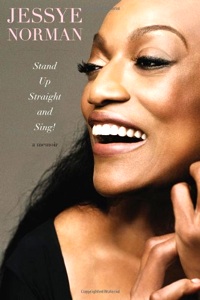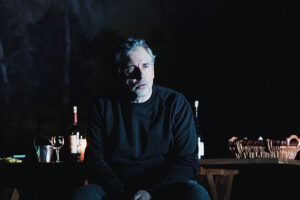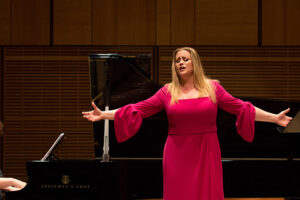
I am certain that we Parterrians are a very literate, even literary, group. Naturally, when a great singer finally takes her ease and sets down her thoughts on the grand and glorious pageant that is called life, we all take notice and appreciate the insight it affords us into the life of one whose intellect and artistry we have admired. We long to share her struggles and her passions, to understand the circumstances of her early life that bore the fruit of her creativity and in particular, dare I say it, her genius.
These tomes come in many varieties as you, I’m certain, are aware. There’s the memoir written in the golden years, post-career, when the many triumphs and frustrations can be viewed with the distance of time and equanimity to allow for equal amounts of self-revelation and awareness. Astrid Varnay, Rosa Ponselle, Régine Crespin, Eileen Farrell and Shirley Verrett all gave us balanced, mature, and often bittersweet accounts of their lives on and off the stage.
Then there are the mid-career fluff pieces like we got from Luciano Pavarotti, Renée Fleming, and Plácido Domingo, which are mostly about extending the brand. Though they are fun to look back on once the reality of contradictions set in years later, they don’t really suffice as a true record of the métier.
But the very best memoirs are those of the barn-burning, score-settling, shoot from the hip, I’m getting out and getting even, variety. The gentlest version of species was Marilyn Horne’s plainly-stated chronicle as she approached her 50th birthday, a fine time for remembrance and anecdote told with a large helping of both candor and wit.
But there are two autobiographies that scale the heights of this guerilla style. The first is More Than a Diva by Renata Scotto where the score settling is so gleeful she actually refuses to mention Luciano Pavarotti by name either in the juicy chestnuts she tells on him (I Lombardi in Rome 1970, La Gioconda San Francisco 1979) or in the discography. The second is Beverly, in which Beverly Sills pretty much pulls the pin out of the grenade, lobs it over her shoulder, and walks away. Almost no one survives that one, including the whole city of Cleveland.
So, when the notoriously private Jessye Norman announced she was penning her life story, I was wildly jubilant because I’ve always found this diva fascinating and have been her greatest fan. If she drew breath in front of a microphone I own it. She was the first singer who really made me appreciate how beautiful sung German could be. Her Lieder interpretations are a very rich, if at times calculated, experience, not only because of her prodigious voice but also her great communicative gifts as a performer.
I once sat in the fifth row center of a recital she gave and was nearly speechless for hours after. I was overwhelmed not only by hearing the voice in such close proximity, but she literally looked at me, me, specifically me, during the course of the concert a number of times. I think I died briefly during Schubert’s “Erlkönig.” (I also have an autographed picture. I just want to dispel any recriminations of favoritism before I say what I’ve got to say here.)
Ms. Norman has betrayed us all. It’s not that this book is completely dull, but there is the tacit agreement that when you document your life and your life’s work we, the audience, are going to get to know you, the author, a little bit better. We don’t have to become friends, mind you, just acquaintances. But even this limited increase in intimacy does not take place. It seems that, after all my years of slavish admiration, she doesn’t want me to know her any better. Nothing you already know about Jessye Norman is either contradicted or embellished upon here.
Stand Up Straight and Sing, composed in an opulent, Mid-Atlantic English writing style that seems like it might read better illuminated on gilt parchment, keeps the reader at a great distance from the subject while La Norman humblebrags on her many accomplishments, honorary doctorates, charitable recognitions, political laurels and floral tributes.
Her bucolic, almost Norman Rockwellesque childhood in Augusta is recalled, but even here the only real revelation is the author’s proto-feminist middle school stance against Home Economics. She wanted to take Wood Shop with the boys instead.
Her ascension at the Berlin Opera after winning a singing competition at the tender age of 23 and then her progress across the great concert platforms of Europe is given a quick once-over. She mentions loving the operas and music of the Richards (Strauss and Wagner) yet there isn’t one word wasted on her characterizations of any of the roles she played or the challenges of singing the music.
The words Covent Garden or La Scala don’t appear in the index. Neither do the names of more than one or two of her singing colleagues. Meanwhile, all two of her favorite conductors are named and praised as are, in particular, her accompanists. Marian Anderson is enshrined in her own chapter.
But Ms. Norman’s real journey as an artist and as a woman is virtually ignored. Her weight is only mentioned once as she indignantly recalls Morley Safer’s tart voiceover comment during her 60 Minutes profile about how her ”grand proportions have kept her from performing on the opera stage the role she may love the most,” i.e. Bizet’s Carmen. True, Safer might have been churlish to bring it up, but she would have never permitted that question to be asked. Her response in the book is to snap that she had indeed been offered a stage production of Carmen in Europe, though the theater remains unnamed.
Yet, though she declines to discuss her weight in retrospect, she obviously thought about it during the career. She clearly lost at least 100 pounds before she presented her Kundry at the Met in 1994: how did she accomplish this feat? For that matter, what was it like growing up in Augusta as the tallest girl in the room, then looking mighty awkward even as a young adult, before finally blossoming into the most elegantly turned-out and photogenic woman of her size anyone has ever seen?
Not mentioning her weight is a denial of its very existence and, to my mind, is exactly as if she had glossed over her experience as an African-American. She similarly remains silent about her personal life. I knew better than to expect her affaires de cœur to be splashed about, but can it be that in all her decades Norman has had no thoughts at all on marriage or children?
There is one very real moment in the book, in the chapter titled ”Racism as it Lives and Breathes,” where she tells about her childhood and all of her family’s good work in the Jim Crow South. It should be required reading for every Supreme Court Justice and Conservative who’d like to say that these things don’t exist any longer, for surely they do.
On a lighter note, she relates a delicious story in which she is taken aside by a soprano colleague (unnamed, naturellement), who regales Norman with a lecture about protecting her voice that ends with, “No’, my dear, is a complete sentence”.
If only she had brought the same level of candor to any other aspect of her life: the recording studio experience, her business dealings, her clothes, costumes and costumiers, directors, intendants. Not a word about acting. And nary a Kathy Battle anecdote!
Mind you, this isn’t the first time Ms. Norman has disappointed me. Nearly 20 years ago I heard she had cancelled a studio recording of Tristan und Isolde with Placido Domingo and Georg Solti because of the brevity of the planned rehearsal schedule. I stalked the earth like a Greek Widow for weeks after, keening “Why, Jessye, why?” until all my friends were ready to throttle me.
If you’re really looking to spend some time getting to know Our Jessye please, by all means, seek the video profile JESSYE NORMAN: A Portrait, since it contains most of the stories in this book as performed by Miss Norman herself.
This book? Leave it on the shelf.
























Comments